Review: CLAUDEL Tells The Story Of French Sculptor Camille Claudel Through A Beautiful Blend Of Dance And Drama.
CLAUDEL

Thursday 29th April 2021, 7:30pm, Playhouse, Sydney Opera House
Wendy Beckett's (Writer and director) CLAUDEL exposes the challenges Camille Claudel faced when choosing to pursue a life as female artist in 19th Century Paris. Finally arriving in Sydney following a premiere season in Paris in 2018, this blend of dramatization and contemporary dance, (choreographed by Meryl Tankard) explores the artist's experiences and reactions to the events that eventually led to incarceration in a mental health institution by her own family.
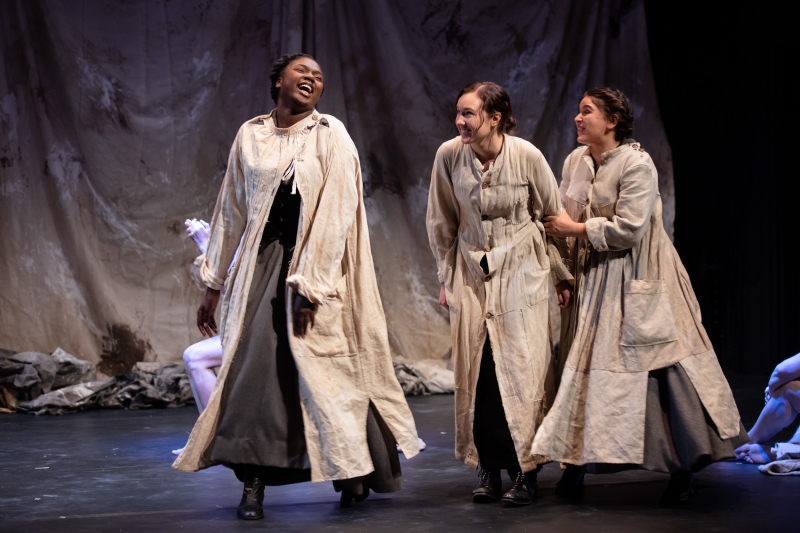 As an artist Camille Claudel (Imogen Sage) is not as well known as she should have been, due in part to the patriarchal era in which she was creating, the fallout from her relationship with her mentor, sculptor Auguste Rodin (Christopher Stollery), and the way in which her mother Madame Claudel (Tara Morice) and her brother Paul (Mitchell Bourke) had her committed to a psychiatric hospital when she was 49, never to be released till she died aged 79. Beckett's work expresses Claudel's life from the time she, and the artists she shared a Paris studio with, Jessie Lipscomb (Melissa Kahraman) and Suzanne (Henrietta Amevor), first meet Rodin, an arrogant misogynistic artist who believes he is above the task of teaching young women who he mistakenly believes are the daughters of wealthy families entertaining their interests while they wait for a suitable marriage rather than serious artists. Given Claudel and Rodin's art focuses on the sculpture of the human form, Beckett has three dancers represent both the works that are being created in the studio, particularly "The Age Of Maturity" which was seen as an autobiographical work presenting Rodin (Kip Gamblin) and his common law wife Rose (Dorothea Csutkai) and Camille (Cloé Fournier), live models that posed for Claudel despite the restrictions against female artists using live models for fear that they would be corrupted, and the physical expression of Claudel's internal thoughts and emotions that range from love and lust in a blossoming romance to pain and terror as she descends into mental illness, tormented by the belief that Rodin is trying to have her killed.
As an artist Camille Claudel (Imogen Sage) is not as well known as she should have been, due in part to the patriarchal era in which she was creating, the fallout from her relationship with her mentor, sculptor Auguste Rodin (Christopher Stollery), and the way in which her mother Madame Claudel (Tara Morice) and her brother Paul (Mitchell Bourke) had her committed to a psychiatric hospital when she was 49, never to be released till she died aged 79. Beckett's work expresses Claudel's life from the time she, and the artists she shared a Paris studio with, Jessie Lipscomb (Melissa Kahraman) and Suzanne (Henrietta Amevor), first meet Rodin, an arrogant misogynistic artist who believes he is above the task of teaching young women who he mistakenly believes are the daughters of wealthy families entertaining their interests while they wait for a suitable marriage rather than serious artists. Given Claudel and Rodin's art focuses on the sculpture of the human form, Beckett has three dancers represent both the works that are being created in the studio, particularly "The Age Of Maturity" which was seen as an autobiographical work presenting Rodin (Kip Gamblin) and his common law wife Rose (Dorothea Csutkai) and Camille (Cloé Fournier), live models that posed for Claudel despite the restrictions against female artists using live models for fear that they would be corrupted, and the physical expression of Claudel's internal thoughts and emotions that range from love and lust in a blossoming romance to pain and terror as she descends into mental illness, tormented by the belief that Rodin is trying to have her killed.
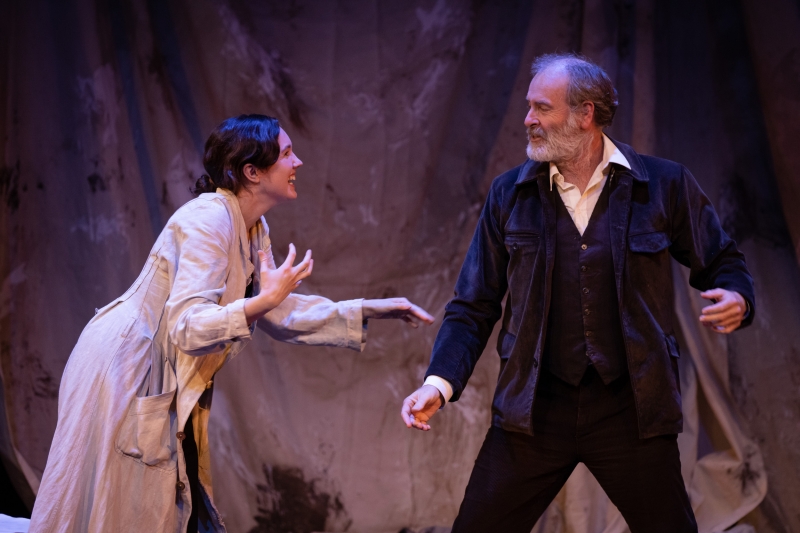 Halcyon Pratt's set design turns the compact Sydney Opera House Playhouse Theatre stage into an artists studio with a large drop cloth forming a backdrop and distorted screen for Régis Lansac's projections that help set the scene with images of the studio's window and Madame Claudel's apartments, or express the images that start to tournament Claudel. The accoutrements of a sculptor's workspace occupy the space, from workbench, potter's drying 'tent', pinths on which works are formed and a large lazy Susan where models can be positioned and turned as their form is studied. The inclusion of a sculptural work created by Li Hongbo allows for a magical expression of Claudel's anger when she discovers Rodin's betrayal and sabotage. Sylvie Skinazi's costume design has a simplicity while retaining a relatively monochromatic tone aside from Claudel's scarlet gown for her celebrated exhibition. Skinazi has the dancers painted in a light beige of dried clay so they appear similar to the sculptural works that Rodin and Claudel now have sitting in galleries in Paris. Francois Lenveu's lighting design reinforces the dedication Claudel had to her work, continuing long into the night, along with having the ability to add to the energy of the physical expression of Claudel's feelings.
Halcyon Pratt's set design turns the compact Sydney Opera House Playhouse Theatre stage into an artists studio with a large drop cloth forming a backdrop and distorted screen for Régis Lansac's projections that help set the scene with images of the studio's window and Madame Claudel's apartments, or express the images that start to tournament Claudel. The accoutrements of a sculptor's workspace occupy the space, from workbench, potter's drying 'tent', pinths on which works are formed and a large lazy Susan where models can be positioned and turned as their form is studied. The inclusion of a sculptural work created by Li Hongbo allows for a magical expression of Claudel's anger when she discovers Rodin's betrayal and sabotage. Sylvie Skinazi's costume design has a simplicity while retaining a relatively monochromatic tone aside from Claudel's scarlet gown for her celebrated exhibition. Skinazi has the dancers painted in a light beige of dried clay so they appear similar to the sculptural works that Rodin and Claudel now have sitting in galleries in Paris. Francois Lenveu's lighting design reinforces the dedication Claudel had to her work, continuing long into the night, along with having the ability to add to the energy of the physical expression of Claudel's feelings.
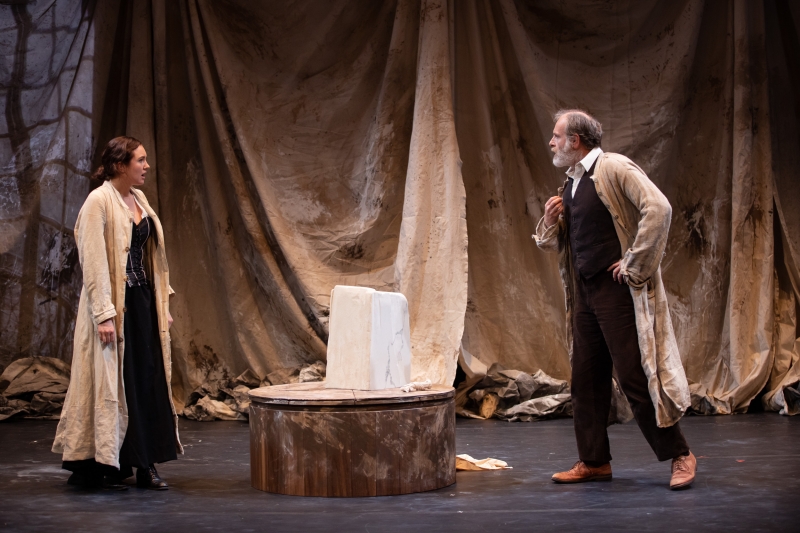 Imogen Sage gives Camille Claudel a brilliantly strong force, ensuring that it is clear that the young woman had a strength of mind to stand up to the arrogant Rodin and the courage to rail against both her mother and the establishment that looked down on women being artists. Sage expresses Claudel's passion for her work while ensuring that her youth and vibrancy remains as a contrast to Rodin's jaded view so his eventual rejection of her and destruction of her career is even more reprehensible. Christopher Stollery's expression of Rodin shows an older man who initially believes he is above the task of tutoring the young women, oozing a masculine obnoxious arrogance that Claudel breaks down when he eventually realizes that Claudel is talented. He retains a tone of aggression and power as he seeks to prove his dominance to Claudel in the way he describes how to manipulate his models, not realizing that the young artist is more than capable of rising to his challenge and being his artistic equal.
Imogen Sage gives Camille Claudel a brilliantly strong force, ensuring that it is clear that the young woman had a strength of mind to stand up to the arrogant Rodin and the courage to rail against both her mother and the establishment that looked down on women being artists. Sage expresses Claudel's passion for her work while ensuring that her youth and vibrancy remains as a contrast to Rodin's jaded view so his eventual rejection of her and destruction of her career is even more reprehensible. Christopher Stollery's expression of Rodin shows an older man who initially believes he is above the task of tutoring the young women, oozing a masculine obnoxious arrogance that Claudel breaks down when he eventually realizes that Claudel is talented. He retains a tone of aggression and power as he seeks to prove his dominance to Claudel in the way he describes how to manipulate his models, not realizing that the young artist is more than capable of rising to his challenge and being his artistic equal.
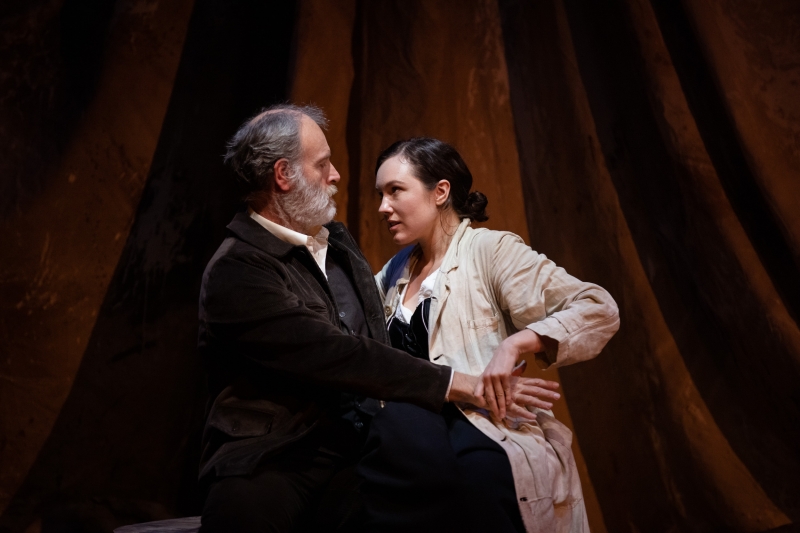 As Claudel's best friend Jessie, Melissa Kahraman provides an encouraging and supportive force through the work while still presenting the reservations that women had in the 19th century as both Jessie and Suzanne try to placate Rodin during their first meeting. Henrietta Amevor's Suzanne allows for a reminder that another sector of society was also poorly represented in the classical arts world while being another figure who supported Claudel's ideals.
As Claudel's best friend Jessie, Melissa Kahraman provides an encouraging and supportive force through the work while still presenting the reservations that women had in the 19th century as both Jessie and Suzanne try to placate Rodin during their first meeting. Henrietta Amevor's Suzanne allows for a reminder that another sector of society was also poorly represented in the classical arts world while being another figure who supported Claudel's ideals.
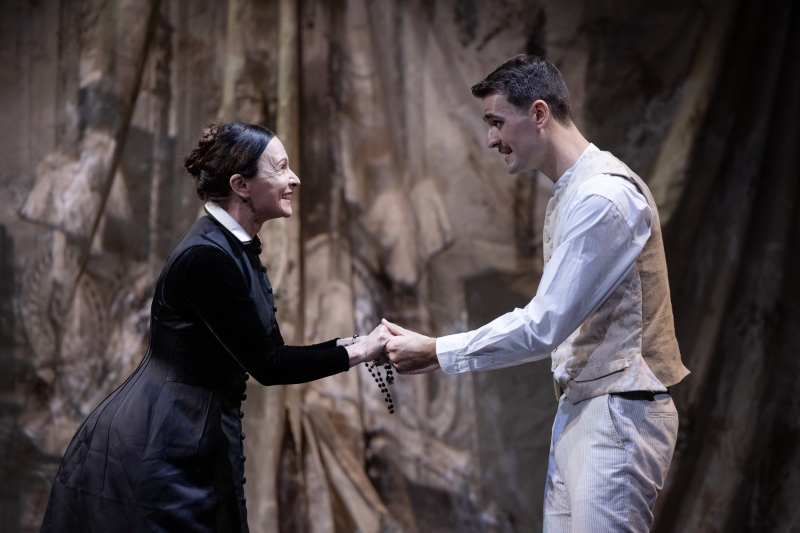 Tara Morice gives Madame Claudel a formidable fierce prejudice and makes it clear that the woman had no maternal instincts towards her eldest child, reinforcing how much Camille relied on her father's support. Mitchell Bourke ensures that younger brother Paul, who went on to be a poet, dramatist and diplomat, is seen as rather weak as he was actually under his mother's power despite Camille's original belief that he was her ally.
Tara Morice gives Madame Claudel a formidable fierce prejudice and makes it clear that the woman had no maternal instincts towards her eldest child, reinforcing how much Camille relied on her father's support. Mitchell Bourke ensures that younger brother Paul, who went on to be a poet, dramatist and diplomat, is seen as rather weak as he was actually under his mother's power despite Camille's original belief that he was her ally.
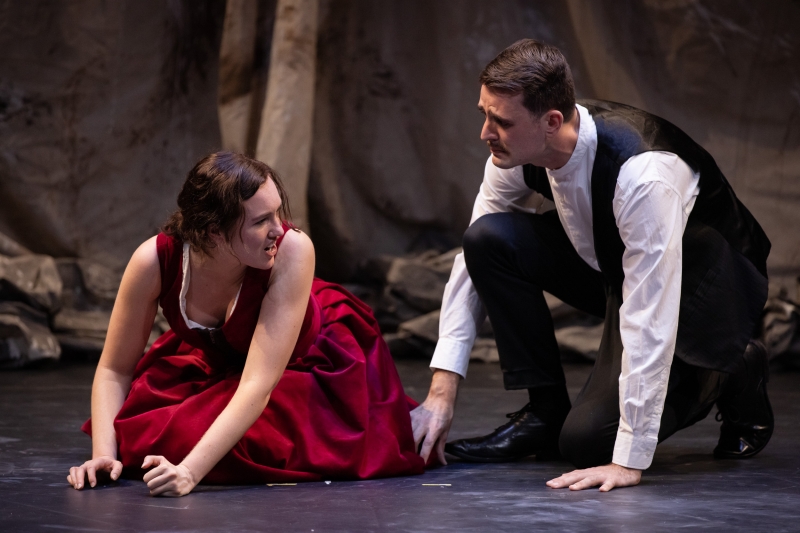 CLAUDEL is a beautifully presented work that is as much a piece of contemporary dance as it is a dramatic play. It is a wonderful expression of a strong female artist who's success was hampered by a man along with an expression of the powers that people could wield over the lives of other people as despite medical professionals believing that Camille could be rehabilitated from her mental illness, her mother and brother ensured that she was never released from care. A must see for anyone that enjoys art, art history, the physical form and contemporary dance or stories of strong women who should have been treated better.
CLAUDEL is a beautifully presented work that is as much a piece of contemporary dance as it is a dramatic play. It is a wonderful expression of a strong female artist who's success was hampered by a man along with an expression of the powers that people could wield over the lives of other people as despite medical professionals believing that Camille could be rehabilitated from her mental illness, her mother and brother ensured that she was never released from care. A must see for anyone that enjoys art, art history, the physical form and contemporary dance or stories of strong women who should have been treated better.
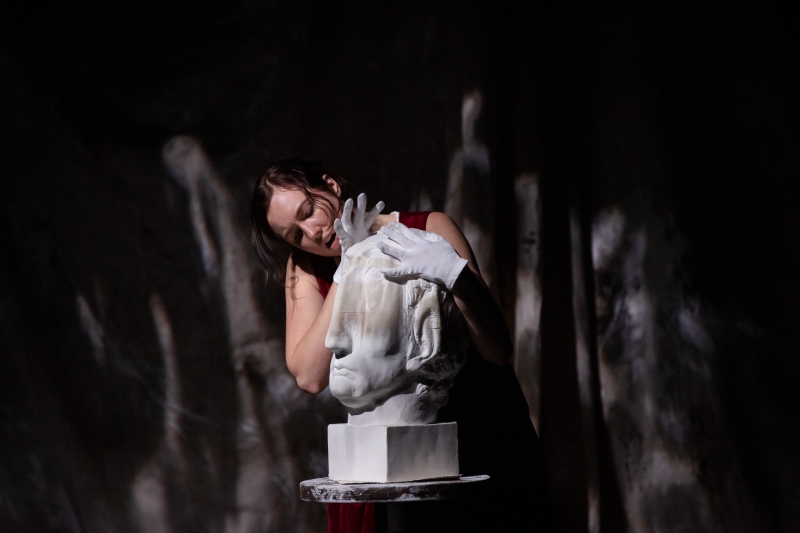 https://www.sydneyoperahouse.com/events/whats-on/theatre/2021/claudel.html
https://www.sydneyoperahouse.com/events/whats-on/theatre/2021/claudel.html
Photos: Daniel Boud
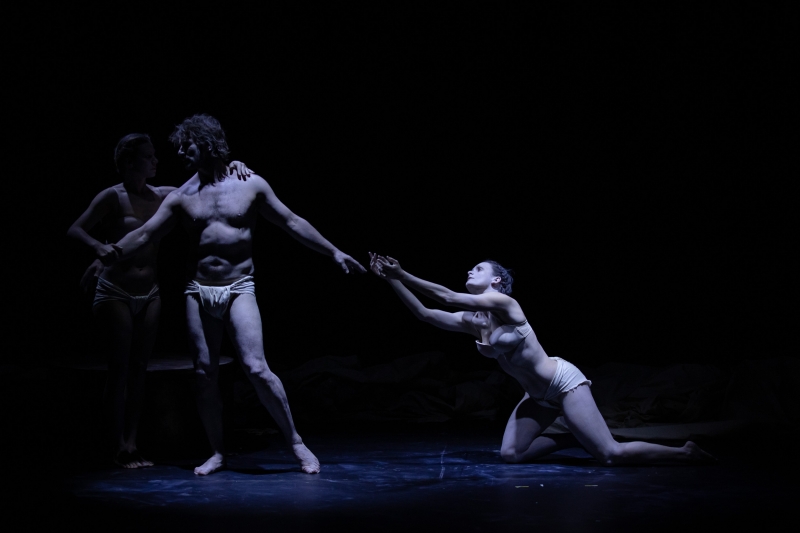

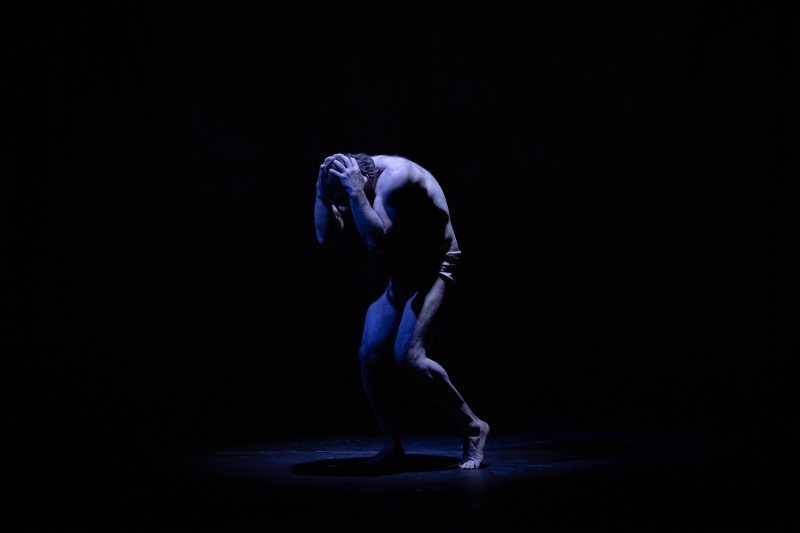

Comments
Videos

